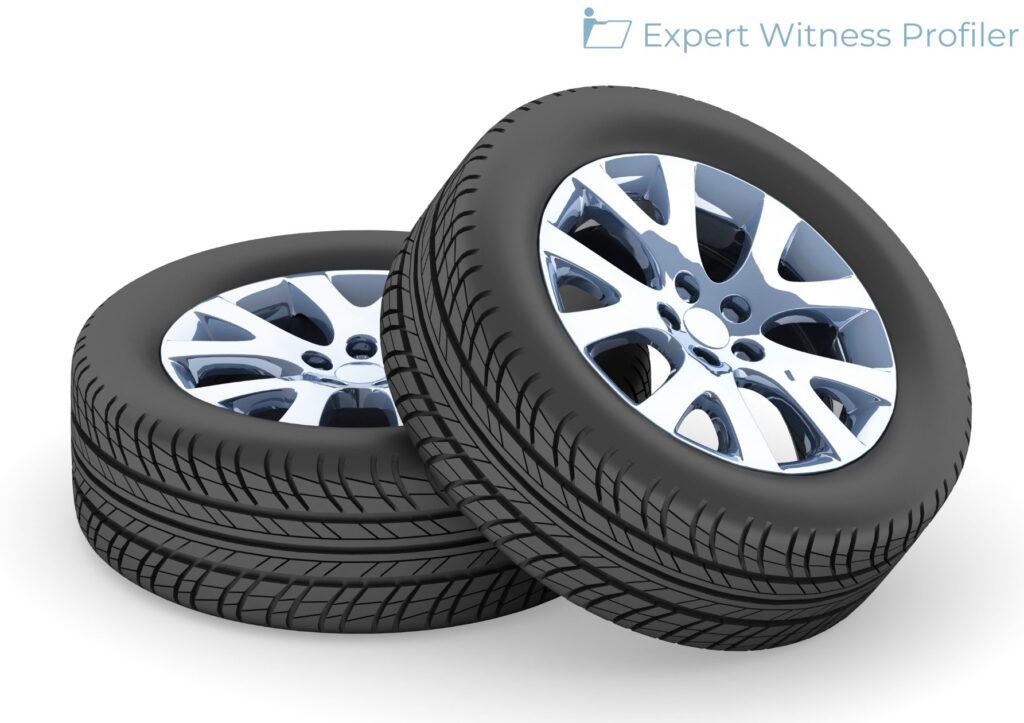Tire Expert’s Impact Damage Theory Admitted
Posted on July 2, 2025 by Expert Witness Profiler
This suit arises from a motor vehicle accident that occurred on September 7, 2018, in Vinton, Louisiana. Plaintiffs alleged that Billy Smith was operating a 2016 Kenworth T880 while traveling westbound on Interstate 10 on that date.
The vehicle was outfitted with Chinese-manufactured steel belt radial truck tires, distributed by CMA under the trade name “Double Coin tires.” The accident occurred when Smith’s tires suffered a catastrophic tread/belt separation, overturning the vehicle and severely injuring Smith. Smith passed away on September 4, 2021, and his surviving spouse and four adult children were substituted as Plaintiffs.
Defendants sought to introduce testimony from tire failure expert Joseph L. Grant. Plaintiffs filed a motion to exclude that testimony under the standards set forth in Federal Rule of Evidence 702 and Daubert.

Tire Expert Witness
Joseph Lawrence Grant possesses over thirty years of experience as a forensic tire analyst, along with over fifty years of experience in the tire industry. He has held multiple managerial and directorial positions during his employment with tire manufacturing companies and has been published several times.
Discussion by the Court
Plaintiffs contended that Grant’s testimony is unreliable because: (1) he did not review the tire’s design or manufacturing specifications, (2) there is little evidence supporting his theory of impact damage causing the tire’s failure, and (3) he failed to exclude possible alternative causes.
Review of design and manufacturing specifications
A physical examination of both the tire and its companion tire, as well as each tire’s wheel, allowed Grant to form his opinion on why the tire failed. If the cause of the tire’s failure can be diagnosed through physical examination, the Court held that reviewing the tire’s specifications may not be necessary. In other words, Grant’s findings are not unreliable simply because he reached them without reviewing certain documents.
Challenges to Grant’s impact damage theory
Grant opined that an earlier impact weakened the tire’s durability, and subsequent use of the then damaged tire eventually caused it to fail, leading to the accident at issue.
The Court found Grant’s opinion to be supported because under the Examinations section of his report, Grant observed several detached steel belts and rusted steel cords on the tire. He reasoned that the steel belt detachments resulted from an impact to the tire, which was left either unrepaired or improperly repaired. The steel cords, then left exposed, were able to rust, severely weakening the tire. After prolonged use, the tire ultimately failed.
Grant noted that, upon a physical examination, the steel cords were not faulty and were in line with industry standards. Moreover, Grant observed many penetrations within the tire’s tread, indicating that it “had been used in service [in areas] where the tire was subjected to conditions” that would likely cause impact damages to occur.
The Court found fault with Plaintiffs’ assertion that Grant could not identify what caused the impact considering Grant did identify the impact object as having “an [approximately] half-inch diameter.”
While any number of potential impact objects could possess a similar diameter, it is reasonable that an expert like Grant could diagnose impact damage as the cause of a tire’s failure but be unable to identify the particular object that impacted the tire.
Besides, Grant cited several academic papers and guides as authorities supporting his conclusions. Grant listed the case-specific materials he reviewed when forming his opinion. Among them are his physical examination of the tire, companion tire, and their wheels; x-rays and photographs of the tire; the accident report; and Plaintiff’s responses.
Challenges to Grant’s failure to consider alternative causes
Finally, Plaintiffs argued that Grant failed to exclude other potential causes of the tire’s failure. In his report, Grant excluded a design or manufacturing defect from having caused the tire’s failure. He found that the tire complied with federal regulations and industry standards, because it had been tested and stamped. Grant explained that, in order to be sold, all tire must “pass a series of durability standards,” including strength and endurance tests. The subject tire was properly stamped as having passed those tests.
Furthermore, Grant referred to a 2005 NHTSA publication, which stated that “design and manufacturing defects are extremely rare,” because the tire industry has committed decades of research to ensuring functional, defect-free products. Noting this, Grant determined that neither a design or manufacturing defect could have caused the tire’s failure and excluded both as alternative causes. Therefore, the Court found no basis for excluding Grant’s testimony.
Held
The Court denied the Plaintiff’s Daubert motion to exclude the testimony of Joseph L. Grant.
Key Takeaways:
- Grant’s findings are not inaccurate simply because he reached them without needing to review certain documents. The Court held that any challenge to his conclusions on this ground is more appropriate for cross-examination.
- The Court held that Grant’s finding of impact damage as the cause of the tire’s failure was a reasonable conclusion.
Case Details:
| Case Caption: | Smith V. China Manufacturers Alliance LLC Et Al |
| Docket Number: | 2:19cv1111 |
| Court Name: | United States District Court, Louisiana Western |
| Order Date: | July 1, 2025 |





